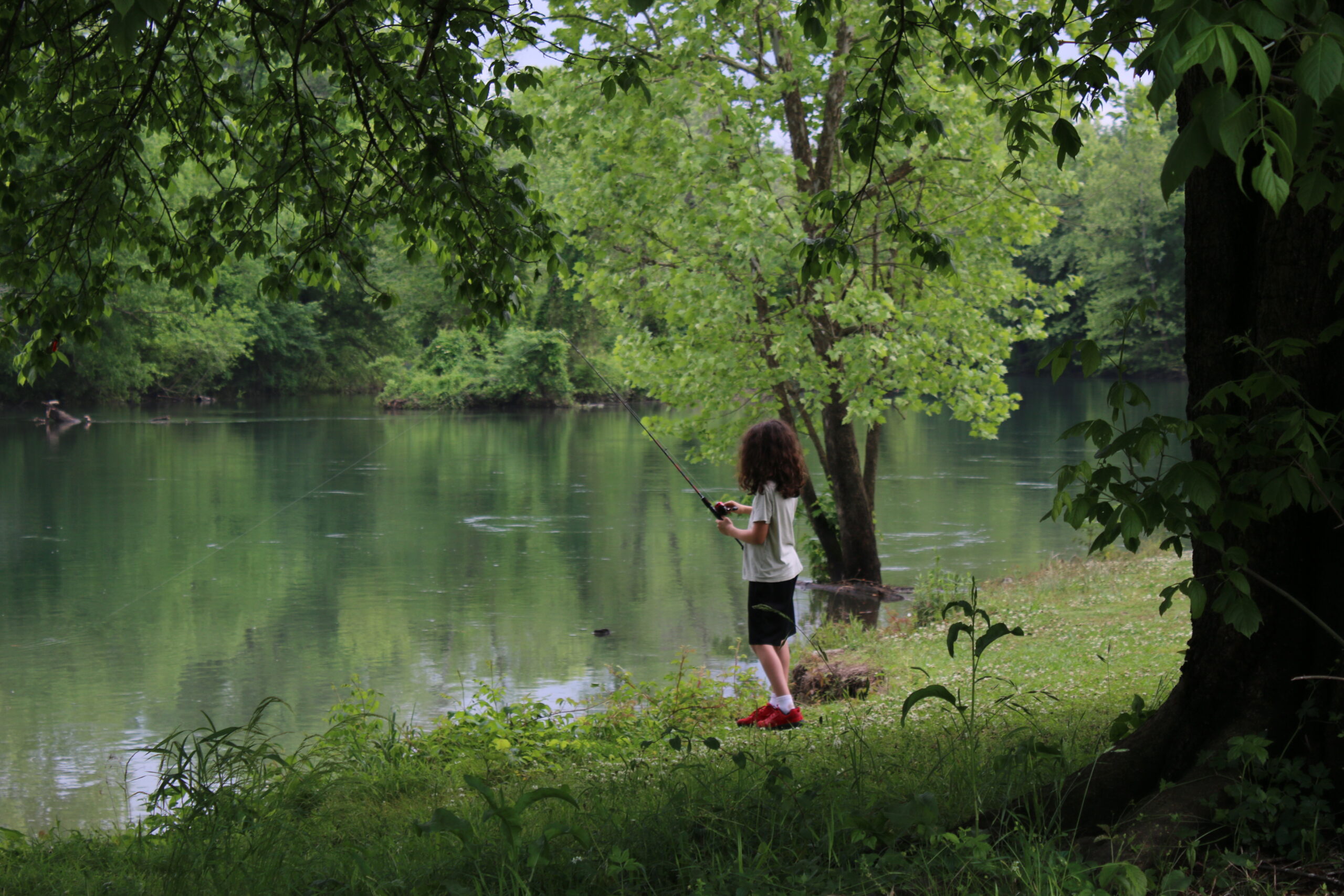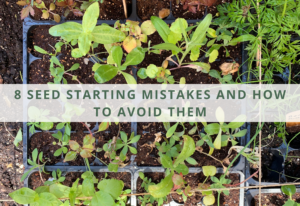One of my favorite memories of growing up with my dad was going fishing together at the creek close to our house in London, Ohio! My dad felt that fishing was an important skill all his kids should have, so he taught us all the steps, from setting up our poles to removing fish from the hook by ourselves. Now that my husband and I have our kiddos, we want to ensure they know how to fish from start to finish! This blog outlines some helpful advice on taking your kids fishing!
Table of Contents
The importance of Teaching kids fishing
Fishing isn’t just about catching fish; it’s a gateway to a world of discovery and connection with nature. Introducing children to fishing at a young age can have profound benefits beyond the thrill of reeling in a big catch.
Bonding with Nature: Taking your kids fishing provides an opportunity for kids to connect with the natural world in a way that few other activities can. Spending time by the water, observing wildlife, and feeling the rhythm of the outdoors can foster a lifelong appreciation for the environment.
Family Bonding: Family fishing trips offer families a chance to unplug from modern life’s distractions and spend quality time together. Whether casting lines from the shore or sitting side by side on a boat, taking your kids fishing creates lasting memories and strengthens familial bonds. Some of my favorite memories as a kid are with my dad, brothers, and uncles fishing!
Life Skills: Taking kids fishing teaches them valuable life skills such as patience, perseverance, and problem-solving. Learning to bait a hook, cast a line, and reel in a catch instills a sense of independence and self-reliance that can serve them well in other areas of life. Fishing is a life skill that they can pass onto their children in the future!
Physical Activity: In an age where screens dominate our daily lives, taking kids fishing gets kids up and moving outdoors. Whether reeling in a fish, wading through a stream, or hiking to a remote fishing spot, fishing encourages physical activity and promotes a healthy lifestyle.
Environmental Stewardship: By introducing children to fishing, we instill a sense of responsibility for the health of our waterways and the creatures that inhabit them. Teaching kids about conservation and sustainable fishing practices ensures that future generations can enjoy the sport for years to come.
Introducing kids to fishing is about more than just teaching them how to catch fish; it’s about nurturing a love for the outdoors, fostering family bonds, and instilling valuable life lessons that will serve them well throughout their lives. So grab your fishing poles, pack up the tackle box, and take your kids fishing on an adventure they will cherish for years.

Preparing For The Trip
Before taking your kids fishing, proper preparation ensures a smooth and enjoyable experience for everyone involved, especially the adults! Here’s a comprehensive guide on how to prepare for a fishing adventure with children:
Choosing The Right Location:
- Research Family-Friendly Fishing Spots: Look for fishing locations suitable for families to take their kids fishing and offer amenities such as easy access, restroom facilities, and picnic areas. We prefer to fish where we can park our vehicles near the water instead of hiking into our fishing spots. It can be an extra obstacle to pack everyone and everything back out to the car when the fishing trip is over.
- Consider Safety: Choose to take your kids fishing at spots with calm waters and minimal hazards, especially if you’re fishing with young children. Avoid areas with strong currents or steep banks.
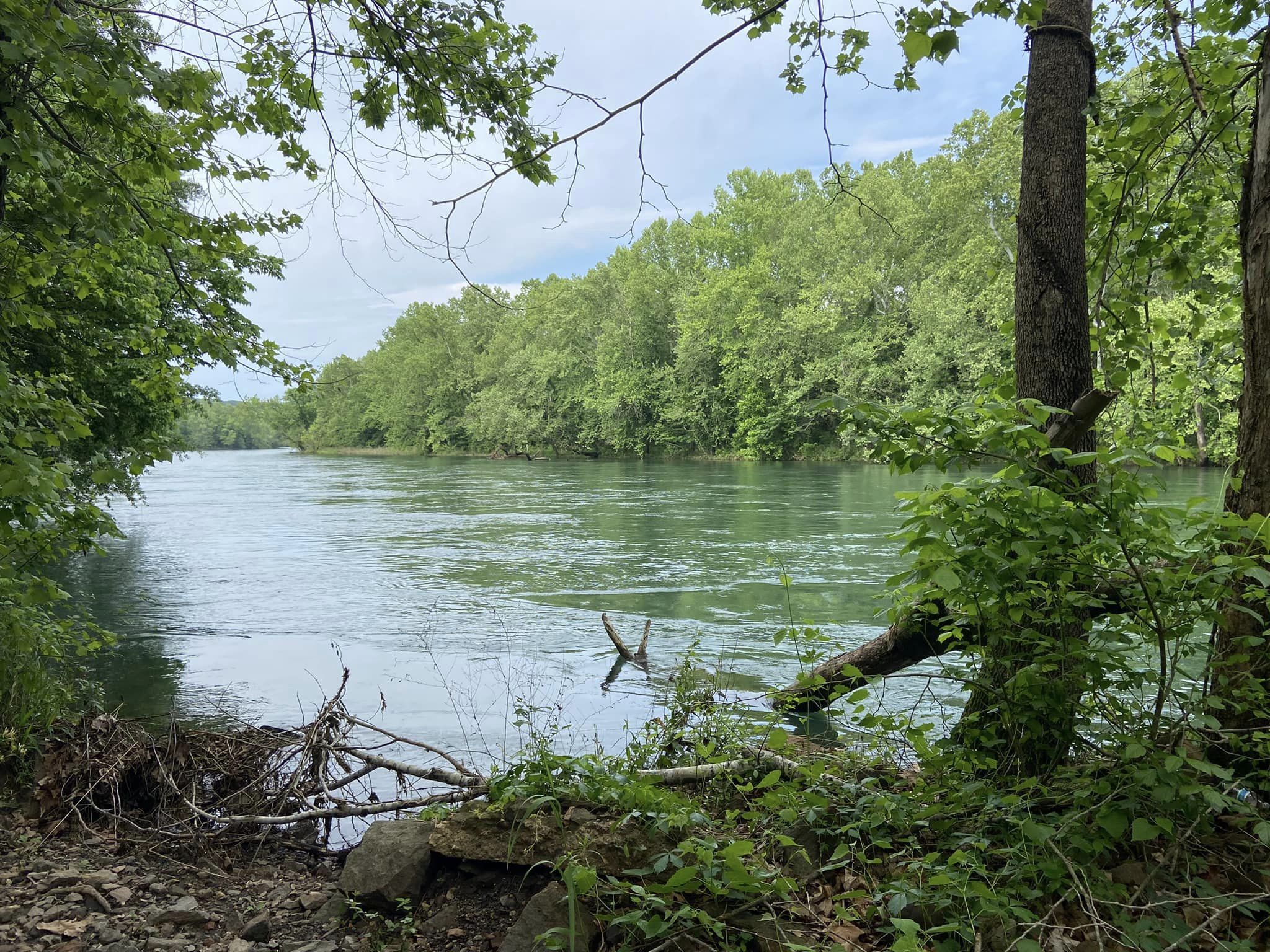
Checking Local Regulations and Permits:
- Review Fishing Regulations: Familiarize yourself with local fishing regulations regarding catch limits, size restrictions, and fishing seasons. Ensure you and your children understand and comply with all fishing rules and regulations.
- Obtain Necessary Permits: Before the trip, purchase any required fishing permits or licenses for yourself and your children. Explain to your children the importance of following fishing laws and regulations.
Gathering Necessary Gear and Supplies:
- Fishing Equipment: Assemble all the necessary fishing gear, including fishing rods, reels, tackle boxes, hooks, bobbers, sinkers, and fishing lines. Ensure that the equipment is suitable for children’s use and adjust the rod’s length and reel’s tension accordingly.
- Safety Gear: Pack essential safety gear such as life jackets, sunscreen, hats, sunglasses, and insect repellent. Take all the precautions against ticks! It is the worst having to pick a bunch of ticks off your kids after everyone is exhausted from a big family trip. Ensure that life jackets fit properly and are worn whenever you are boat fishing or near the water.
Packing Essentials for a Comfortable and Safe Experience:
- Snacks and Drinks: One of my biggest tips for you on any adventure or trip involving kids is to ensure you bring enough snacks and drinks! There are few things worse than hungry, grumpy kids on a journey. When we take our kids fishing, we always stock up on a variety of snacks before a trip. We purchase many of our snacks in bulk from Costco or make them at home, like oatmeal energy bites and medium-boiled eggs. We also bring a lot of water and bubbly water for a little variety to keep the kids and ourselves hydrated on trips. Grabbing yourself a bottle of trace minerals or liquid IV isn’t a bad idea to boost your hydration! You can make your electrolyte mix with just some water, Real salt, honey, and lemon juice!
- Clothing and Footwear: Children should wear comfortable, weather-appropriate clothing that can be layered. Although it might feel warm away from the water, it can be chilly next to it. Encourage them to wear closed-toe shoes with good traction to prevent slips and falls. Our kids like to wear their rain boots, which can help with tick prevention!
- First Aid Kit: Bring a basic first aid kit containing bandages, antiseptic wipes, pain relievers, and any necessary medications for emergencies.
- Fishing Guide or Manual: Bring a fishing guidebook or manual to help children learn about different fish species, fishing techniques, and safety tips. Kids love to figure out what kinds of fish they might be able to catch and identify their catches! My brothers and I loved catching fish and seeing who could tell what kind of fish it was first.
By carefully preparing for the fishing trip and ensuring you have all the necessary gear and supplies, you can set the stage for a memorable and successful outdoor adventure with your children.
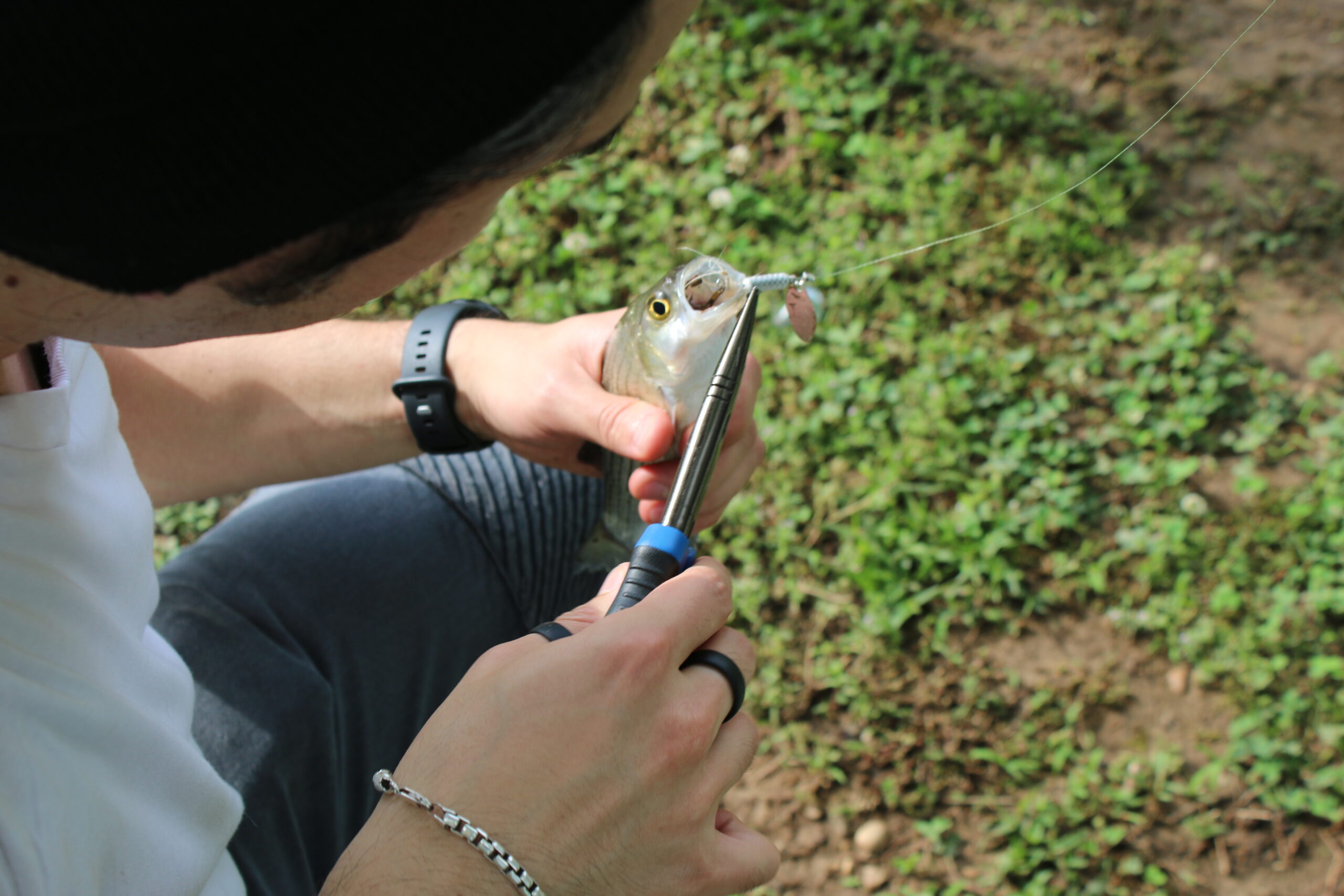
Explaining Fishing Equipment and Its Uses
Before heading out on a fishing adventure with kids, it’s essential to familiarize them with the basic equipment and its purposes. Here’s a breakdown of the necessary fishing gear and how to explain its uses to children:
Rod and Reel: Start by introducing the fishing rod and reel, explaining that the rod is used to cast the line, while the reel is used to reel it back in. Demonstrate how to hold the rod and reel properly and how to operate the reel’s handle.
Fishing Line: Explain that the fishing line connects the hook to the rod and reel. Show them how to thread the line through the rod’s guides and attach it to the reel.
Hooks: Teach children about different types of hooks and their uses, from small hooks for catching panfish to larger hooks for bigger fish. Emphasize the importance of handling hooks with care to avoid accidents.
Baits and Lures: Introduce kids to various baits and lures and explain how they attract fish. Show them how to bait a hook with worms, insects, or artificial lures, and discuss the differences between live bait and artificial lures.
Bobbers: Explain the purpose of bobbers, which are small floats attached to the fishing line. Demonstrate how to attach a bobber to the line and explain how it helps indicate when a fish bites by bobbing up and down.
Sinkers: Discuss the role of sinkers in fishing, which are small weights attached to the line to help sink the bait to the desired depth. Show children how to attach sinkers above the hook and explain how they can adjust the depth of their bait.
Safety Gear: Lastly, emphasize the importance of safety gear, such as life jackets and sun protection, when fishing near water. Teach kids how to properly wear and use safety gear for a safe and enjoyable fishing experience.
By explaining the purpose of each piece of fishing equipment and demonstrating how to use it properly, children can gain a better understanding of the fishing process and feel more confident and prepared for their fishing adventure.
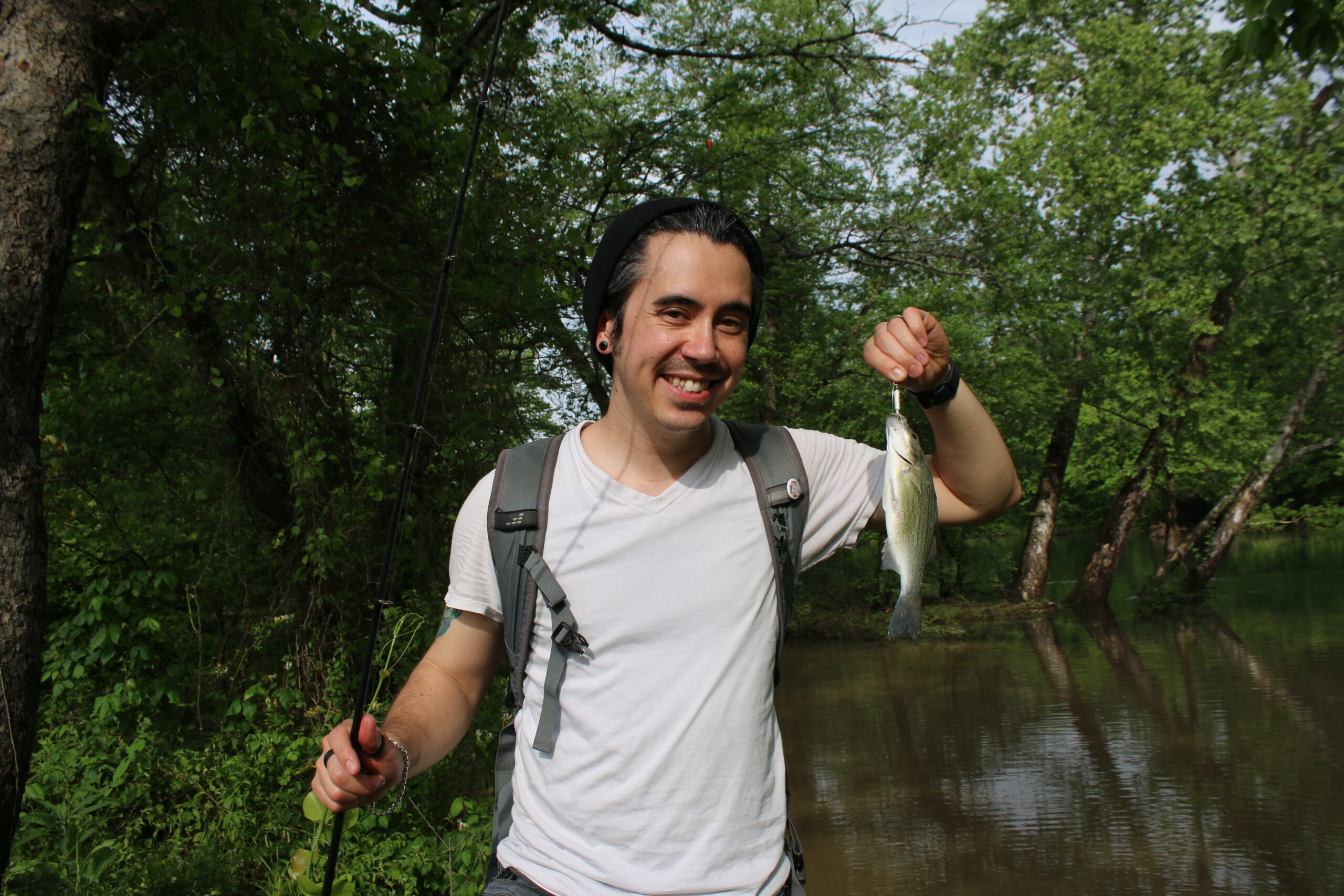
Demonstrating Basic Fishing Techniques When taking kids fishing
Before casting their lines, teaching children the fundamental fishing techniques to ensure a successful and enjoyable fishing trip is important. Here’s how to demonstrate these basic skills:
- Casting a Line:
- Start by showing children how to hold the fishing rod properly, with one hand on the rod’s handle and the other grasping the rod above the reel.
- Demonstrate the proper casting technique by holding the line with your index finger, pulling back the rod, and then swiftly flicking it forward while releasing the line with your finger. Little kids fishing poles will often come with a plastic fish you can attach to the pole so your kiddo can practice casting in the grass before attaching any hooks and bait.
- Encourage children to practice casting in an open area away from obstacles, such as trees or other anglers, until they feel comfortable and confident.
- Baiting a Hook:
- Teach children how to bait a hook by threading the bait onto the hook securely. Depending on the type of bait used (e.g., worms, insects, artificial lures), demonstrate the appropriate method for baiting the hook.
- Emphasize the importance of handling hooks with care to avoid injuries and teach children how to securely attach the bait to the hook without getting pricked.
- Setting the Hook:
- Explain to children how to detect when a fish bites by watching for movement or feeling a tug on the fishing line.
- Demonstrate the proper technique for setting the hook by swiftly pulling the rod upward when they feel a bite, ensuring the hook penetrates the fish’s mouth.
- Reeling in a Catch:
- Show children how to reel in a fish once hooked by turning the handle steadily and smoothly. Emphasize the importance of maintaining tension on the line to prevent the fish from escaping.
- Provide guidance on adjusting the reel’s drag setting to control the resistance when reeling in a fish, depending on its size and strength.
- Handling and Releasing Fish:
- When you take your kids fishing, teach children how to safely handle and release fish to minimize harm and stress to the fish. Demonstrate proper techniques for holding the fish gently and removing the hook with care.
- Emphasize the importance of handling fish with wet hands to protect their delicate skin and avoiding excessive handling or squeezing that could injure them.
By demonstrating these basic fishing techniques to children in a clear and hands-on manner, you can help them feel confident and prepared to participate in the fishing experience and create lasting memories together.

Teaching Safety Measures Around Water Bodies
Ensuring the safety of children around water is paramount when taking kids fishing. Here’s how to teach essential safety measures to keep children safe:
- Supervision:
- Stress the importance of adult supervision when near water bodies, such as lakes, rivers, or ponds. Designate specific areas where children can fish and establish boundaries to prevent wandering.
- Life Jackets:
- Teach children the importance of wearing a properly fitted life jacket whenever they are near or on the water, regardless of their swimming abilities. Demonstrate how to correctly put on a life jacket and ensure it is securely fastened before entering the water.
- Water Awareness:
- Educate children about the dangers of deep water, strong currents, and underwater obstacles such as rocks or logs. Encourage them to stay away from areas with fast-moving water or steep drop-offs and always fish safely from the water’s edge. When we take our kids fishing, we tell them to stand their body length away from the edge. This way, if they do fall for some reason, they fall away from the water!
- Buddy System:
- Implement a buddy system where children are paired up and responsible for looking out for each other’s safety. Encourage them to stay together and alert an adult if they encounter any hazards or emergencies. Making memories together is a fun part of taking kids fishing, and this includes sibling memories!
- Slip and Fall Prevention:
- Teach children to watch their footing and be cautious when walking on slippery surfaces such as rocks, docks, or riverbanks. Emphasize the importance of wearing appropriate footwear with good traction to prevent slips and falls.
- Weather Awareness:
- Educate children about the potential hazards of inclement weather, such as lightning storms or sudden changes in water conditions. Teach them to be aware of weather forecasts and to seek shelter immediately if weather conditions deteriorate.
- Emergency Procedures:
- Review emergency procedures with children, including how to call for help in an emergency and what to do if someone falls into the water. Teach them to remain calm and to throw a floatation device or extend a helping hand to someone in distress without putting themselves in danger.
By teaching these safety measures around water bodies, you can help children develop awareness and respect for water safety while enjoying the fishing experience to the fullest. Always prioritize safety above all else to ensure a fun and worry-free fishing trip for everyone involved.
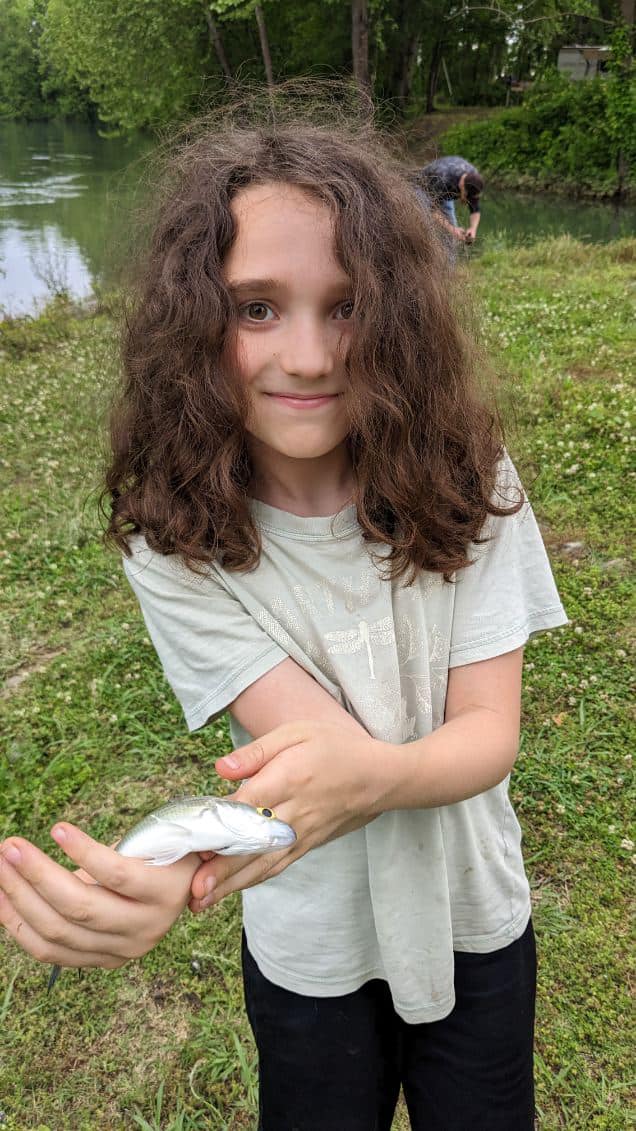
Patience and Persistence
Teaching children the values of patience and persistence is one of the most valuable lessons fishing can offer. Here’s how to instill these crucial qualities during your fishing trip:
Managing Expectations for a Successful Fishing Trip:
- Set Realistic Goals: Help children understand that fishing is not just about catching fish but also about enjoying the experience outdoors. Set realistic expectations for the trip, emphasizing that success is measured by the memories made and the lessons learned rather than the number of fish caught.
- Focus on Fun: Encourage children to focus on having fun and enjoying the process of fishing rather than solely on the outcome. Remind them that even if they don’t catch a fish, the time spent outdoors with family is still valuable and rewarding.
Teaching the Value of Patience and Perseverance:
- Practice Waiting: Fishing requires patience, as fish may not bite immediately. Teach children the art of waiting quietly and attentively, encouraging them to observe their surroundings and appreciate the beauty of nature while waiting for a bite.
- Demonstrate Perseverance: Be a role model for perseverance by demonstrating patience and persistence in your fishing efforts. Show children that success often requires repeated attempts and a positive attitude, even in the face of setbacks or challenges.
Embracing the Learning Process and Failures as Part of the Experience:
- Emphasize Learning: Help children understand that fishing is a learning process and every fishing trip offers opportunities for growth and improvement. Encourage them to ask questions, try new techniques, and learn from their experiences, whether successful or not.
- Normalize Failure: Teach children that failure is a natural part of the fishing experience and an opportunity for growth. Emphasize that even experienced anglers have days when they don’t catch any fish, but what matters most is their effort and determination.
By teaching children the values of patience and persistence through fishing, you equip them with essential life skills and help them develop a resilient and positive mindset that will serve them well in all aspects of their lives.
Fostering a Positive Attitude Toward Challenges
Like many outdoor activities, fishing comes with its challenges. Here’s how to foster a positive attitude in children when you take your kids fishing:
- Encouragement: Encourage children to approach challenges positively and be willing to learn. Remind them that setbacks and obstacles are a natural part of the fishing experience and an opportunity for growth.
- Problem-Solving Skills: Teach children to problem-solve and adapt to changing circumstances while fishing. Encourage them to brainstorm solutions to challenges such as changing weather conditions, finicky fish, or tangled lines, fostering independence and critical thinking skills.
- Celebrating Efforts: Celebrate children’s efforts and perseverance in facing challenges, regardless of the outcome. Praise their determination and resilience, emphasizing that the journey is as important as the destination.
- Learning from Mistakes: Encourage children to view mistakes and failures as valuable learning experiences rather than sources of frustration. Help them identify what went wrong, discuss strategies for improvement, and empower them to try again with renewed confidence.
Environmental Awareness
Educating Kids about the Importance of Conservation
- Teaching Stewardship: Instill in children a sense of responsibility for the environment by educating them about the importance of conservation. Discuss concepts such as preserving natural habitats, protecting wildlife, and reducing pollution to maintain healthy ecosystems.
- Hands-On Learning: Engage children in hands-on activities that demonstrate conservation principles, such as participating in park and beach clean-ups, planting trees, or restoring fish habitats. Stress the importance of picking up their trash and never leaving litter behind. Please encourage them to take an active role in caring for the environment and positively impacting their community.
Practicing Catch-and-Release Techniques
- Promoting Sustainability: Teach children the importance of practicing catch-and-release techniques to ensure the long-term sustainability of fish populations. Explain that releasing fish back into the water allows them to reproduce and contribute to healthy ecosystems.
- Proper Handling: Demonstrate proper catch-and-release techniques, such as minimizing handling time, using barbless hooks to reduce injury, and supporting the fish in the water until it swims away. Emphasize the importance of treating fish with care and respect to minimize stress and maximize survival rates.
Discussing the Impact of Human Actions on Aquatic Ecosystems
- Raising Awareness: Have open discussions with children about the impact of human activities on aquatic ecosystems, such as pollution, habitat destruction, overfishing, and climate change. Help them understand how these factors can harm fish populations and disrupt ecosystems.
- Empowering Action: Empower children to take action to protect aquatic ecosystems by making environmentally conscious choices in their daily lives, such as reducing waste, conserving water, and supporting conservation initiatives. Encourage them to become advocates for the environment and inspire others to join in efforts to safeguard our planet’s natural resources.
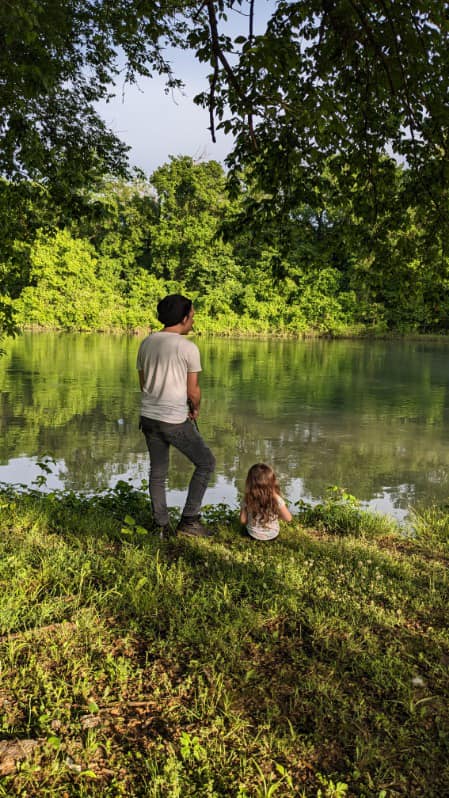
Teaching Kids To Fish Is And Adventure For The Whole Family
Embarking on a fishing trip with children is more than just a recreational activity; it’s an opportunity to create lasting memories, foster valuable life skills, and instill a deep appreciation for the natural world.
Throughout this guide, we’ve explored the essential elements of taking kids fishing, from preparing for the trip and teaching basic techniques to fostering environmental awareness and resilience in the face of challenges.
Choosing the right location, checking regulations, and gathering the necessary gear can set the stage for a safe and enjoyable fishing experience.
Teaching children basic fishing techniques and safety measures ensures they feel confident and prepared to participate in the adventure. Moreover, fostering a positive attitude towards challenges and nurturing environmental awareness empowers children to become stewards of the environment and advocates for conservation.
As you embark on your fishing journey with children, remember to celebrate every moment, whether it’s catching a fish, learning a new skill, or simply enjoying each other’s company amidst the tranquility of nature.
Cherish these moments and the connections forged with family and the great outdoors, knowing that the lessons learned and memories made will last a lifetime. So grab your rods and reels, head to the water, and embark on an unforgettable fishing adventure with your children. Happy fishing!

